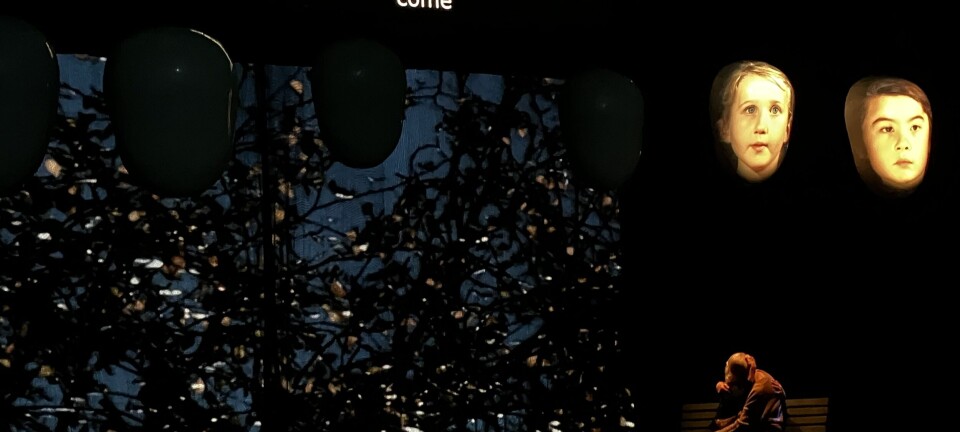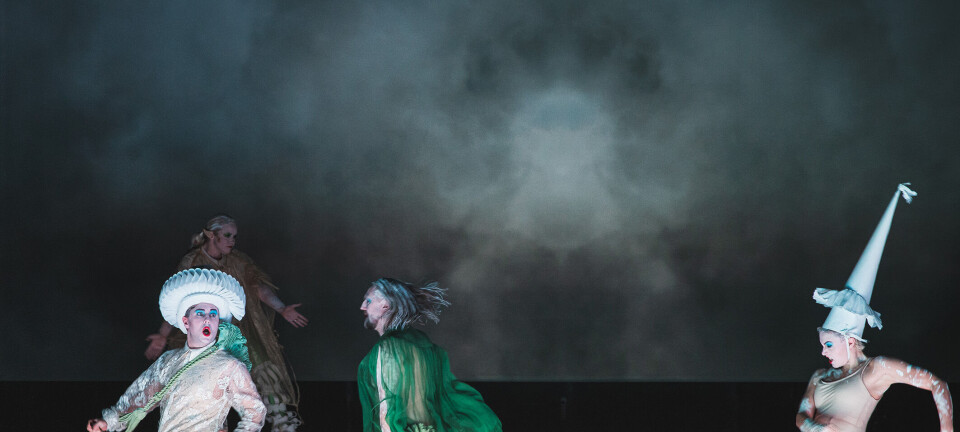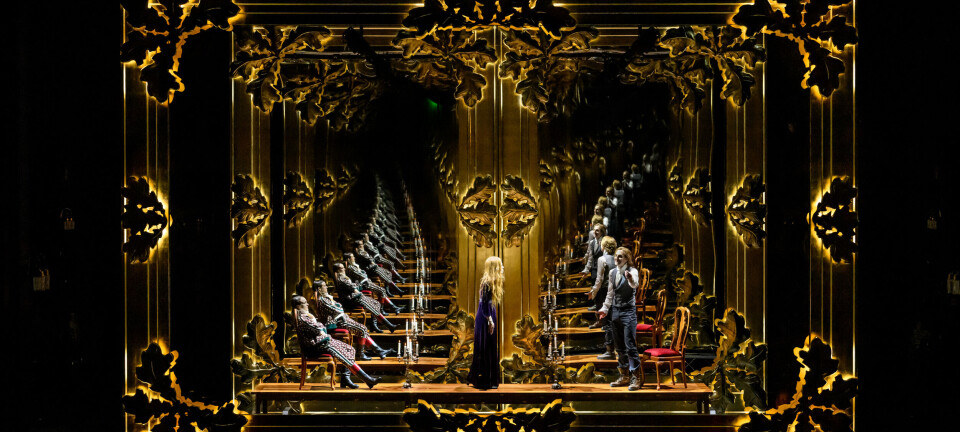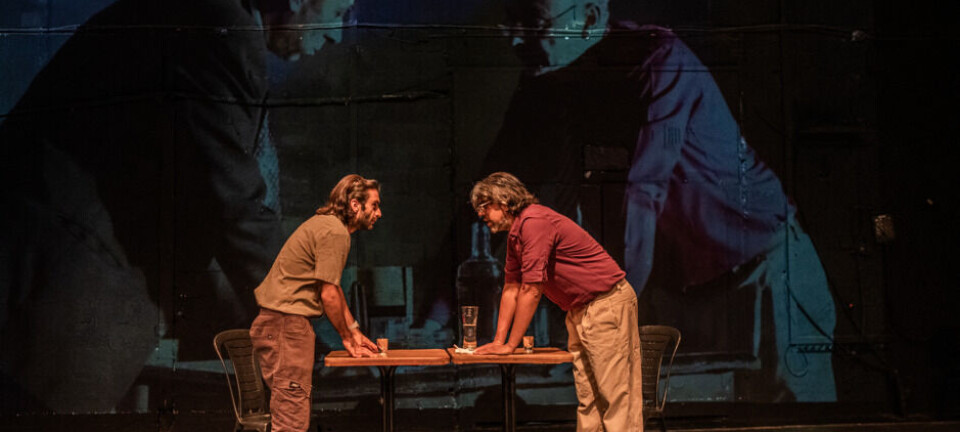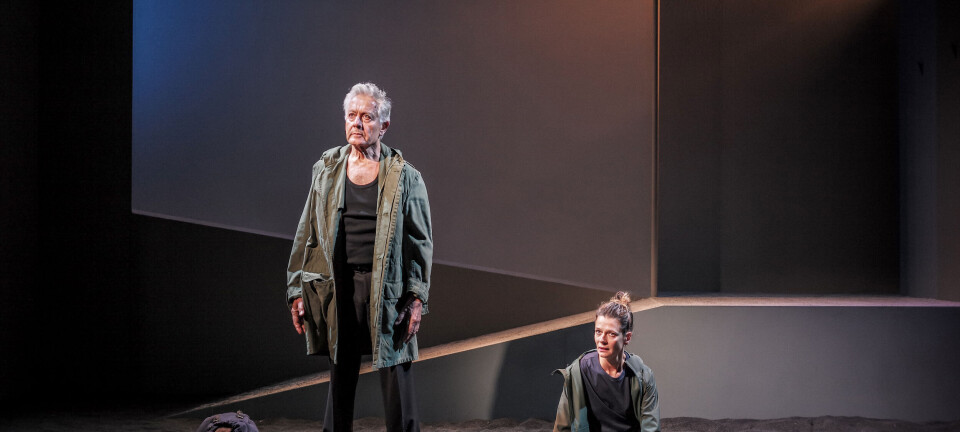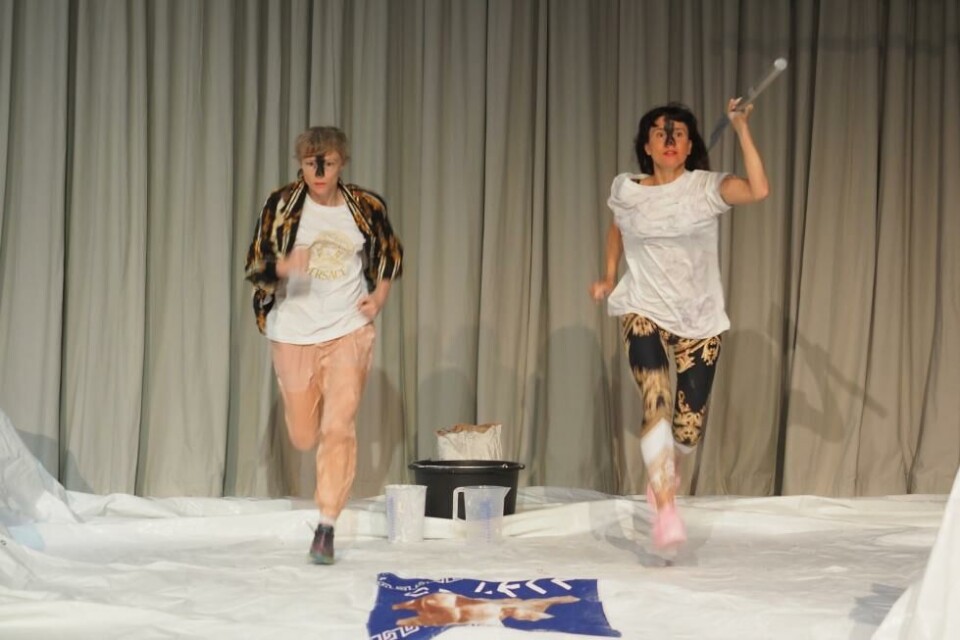
Western civilization: a good idea
«Cry Me A River – the quest for the source» by Karen Røise Kielland and Katja Dreyer meanders around storytelling and Greek mythology, yet never takes the plunge.
Cry Me A River opens with the image of a storytelling cliché. Two performers are sitting around a fireplace reciting the first sentences
of the Odyssey: «Sing in me, Muse, and through me tell the story of that man skilled in all ways of contending».Soon, the image morphs into the two women sitting on the beach, a heroine-duo in search of «the origin of all things known to them, or the source of western heritage».
The strangeness of this sentence surprises me. Not only because it seems odd to think of heritage as having ‘a source’, but the statement also implies a subtext that at first I cannot place.
Karen Røise Kielland and Katja Dreyer have known each other for many years. They both studied in the Netherlands and later worked with the choreographer Ivana Müller, while also making their own work independently of each other. Sharing an interest for history and documentary, the duo decided for their first collaboration to research the notion of ‘sources’.
Plaster
After the little prologue, we enter a kind of plaster workshop. Plaster casts, bags filled with plaster and pink silicon molds take up the stage. Preparing for the writing of this review, my art history education goes into full gear and I start shamelessly analyzing the scene: Casts are typically associated with ‘reproduction’, but they also represent the transmission of artistic and cultural values of Western civilization throughout Europe and North America. Replicas have played a crucial role in the establishment of the Ancient Greek and Roman canon by Western scholars in the 15th century. Molds can be seen as the literal vehicles of ‘Western beauty ideals’. Symmetry, proportion and harmony: we got it all from Ancient Greece! Another cliché. Or is the performance trying to address the ‘imprints’ of culture – how cultures leaves traces and how these traces affect our understanding not only of history, but also of ourselves?
Røise Kielland and Dreyer start working with the plaster and the casts in a way that seems both somewhat lackadaisical but also a bit as if they are performers in a children’s TV program. They start theatrically relating the latest gossip to each other. There are rumors about tourists breaking into the Epigraphic Museum in Athens. Apparently the tourists were looking for old stories but instead they met a guard who might have been a man, or was it a dog? Later, one of the performers says she heard that a tourist, when he was touching an actual fragment of The Odyssey, got an erection. Erections and mythology, the list of Western heritage-clichés is epic.
Throughout the performance, we move back and forth between ‘the fireplace’, ‘the plaster workshop’ and ‘the oracle’. The latter is represented as an echo-producing tube that descends from the ceiling, like divinity tends to do. Fragments of texts are being alternated, almost always starting with the premise of a story, but without ever getting anywhere. Searching for the source is hard.
Water and blood
Slowly the performance meanders toward Styx, the river that plays a central role in Ancient Greek mythology. «Stories attach themselves to rivers, to streams», says one of the performers.
Rituals, books and warriors reappear throughout the performance. Also the book ‘Germania’ with Himmler, its biggest fan, receives a moment of attention. Whenever Wagner, the music from Star Wars or some unexpected techno fills the room I catch myself thinking, «Oh, now?». It’s a strange mix of ingredients and rhythms, as if both form and content is caught between a desire to be playful and funny, while being held back in a hesitant safe zone of floating poetic text and endless suggestions.
The traces of Ancient Greek heritage are maybe best found in spas, I think to myself cynically. Before going to the theatre I was swimming in Bislet Bad. For people who don’t know Oslo, it’s the Norwegian «cheap» option for childfree swimming and simple steam-and-sauna experience. In Bislet, ‘the source of Western heritage’ literally echoes in the alcoves as the sounds from the pool are being reverberated by the fake marble tiles and the plastic lavender bushes and olive trees, all dusted by time.
What irks me in Cry Me A River is not the potpourri of references – it is their delivery. I wouldn’t mind the brushing through several topics and never diving deep, if the delivery was, to put it bluntly, convincing. Or I wouldn’t mind experimental and abstract storytelling that leads to nowhere, if the performative register would shift a little. But as it is, the audiences is left with a kind of anaemic style, giving the impression that ‘Western civilization can go quietly to bed now’, while in fact the Western monster is more awake than ever. Sentences such as ‘there is no democracy left outside this museum’ and ‘the lights of Europe will go out’ flare up, but the airy delivery quickly turns them dull.
Gandhi
There is something about the interest in ‘the source’ that insinuates essentialism and the idea of absolute truth. The performance seems to want to attempt a critique of Western culture as a mostly historical fabrication – a cultural construct appropriating any narrative that will justify structural oppression and exploitation – but somehow never takes the plunge. Instead we keep on meandering.
Which brings me to Mahatma Gandhi of all people. When someone asked him what he thought of western civilization, he replied: «I think it would be a very good idea.» It’s debatable if he really said this, but like many of the best stories, it has survived because it has a flavour of truth. Somehow I wish there would have been more of that flavour in Cry Me A River.
The dramaturgically most interesting moment happens when an actual plumber is fetched from the foyer. Tall, wearing a lit headlamp and carrying thin brass pipes, he is led across the stage to somewhere behind a curtain where he disappears. He only comes back for the last scenic transformation where he lays down his brass pipes to installs a tap at the center of the stage while accompanied by a female harpist dressed in waving white garments. In a clinically gender stereotypical sense, this image is hilarious.
If museums are literally falling apart and if European democracy is gradually voted out by the very people it was supposed to serve; if we are losing touch with the complexity of our stories and have to give place to one-liners about great nations, then the lack of urgency proposed in the final scene is perplexing. It shows a museum room with two lines of identical casts of female torsos, one row showing fronts, the other showing backs. The plumber’s tap is on and the water is running into a bucket. A piece of plaster theatrically falls down from the ceiling and the light goes out. We sit in the dark and listen to the water running. The water comes from Maridalen, I think. Where does the water in Maridalen come from? (Published 06.07.2019)





